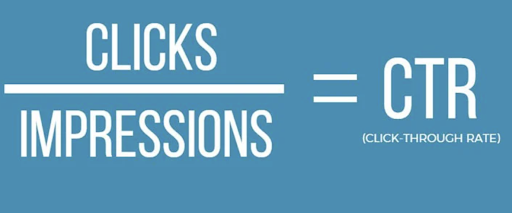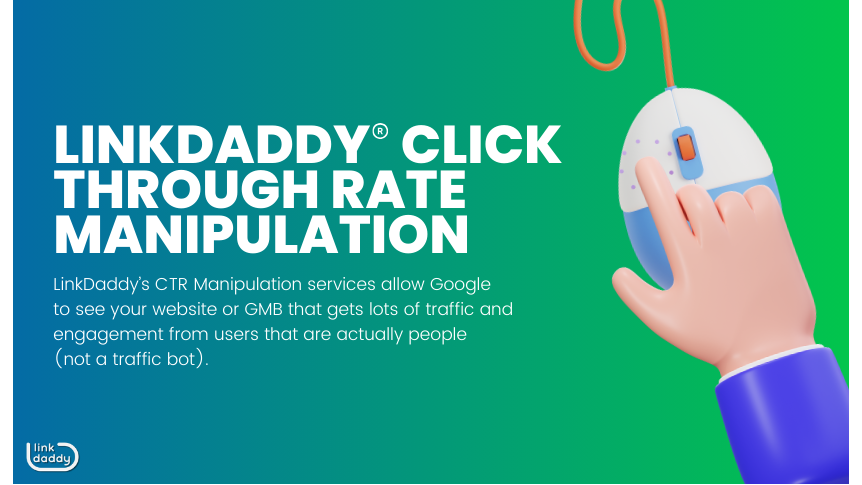Efficient Ways to Implement CTR Manipulation for Better Click-Through Rates
Efficient Ways to Implement CTR Manipulation for Better Click-Through Rates
Blog Article
Unlock the Possible of CTR Manipulation for Improved Project Efficiency
Discovering the realm of CTR control reveals a world of possibilities for marketing professionals seeking to elevate their campaign outcomes. As the journey to unwind the complexities of CTR control starts, the potential for transformative results waits for those who dare to navigate this nuanced landscape.
Comprehending CTR Control Strategies
In the realm of digital marketing, understanding CTR control strategies is essential for maximizing campaign performance. Click-through rate (CTR) is a crucial metric that measures the efficiency of your ads in generating clicks. By controling CTR, marketers can affect ad efficiency and eventually improve campaign end results.
One typical strategy used for CTR adjustment is advertisement duplicate optimization. Crafting compelling ad duplicate that reverberates with the target audience can bring about higher CTRs (LinkDaddy CTR Manipulation). Consisting of strong calls-to-action, relevant key words, and unique marketing factors can tempt customers to click on the advertisement
Another method is proposal changes based upon CTR performance. Platforms like Google Ads make use of Top quality Score, which considers CTR among various other elements, to determine advertisement ranking and cost-per-click. By monitoring and changing quotes based upon CTR data, marketing professionals can enhance advertisement presence and minimize costs.
In addition, A/B screening various ad variants can aid determine which elements drive greater CTRs. Testing images, descriptions, and headings can provide beneficial insights right into what resonates best with the audience, allowing for educated optimization decisions.
Comprehending these CTR adjustment strategies is essential for electronic marketers looking to boost project efficiency and drive meaningful results.
Executing Strategic CTR Optimization
To successfully carry out strategic CTR optimization, electronic marketing experts should leverage a mix of data-driven understandings and targeted changes to improve campaign performance. By examining key metrics such as click-through prices (CTR), interaction levels, and conversion prices, marketers can recognize locations for improvement and improve their strategies as necessary. One important facet of strategic CTR optimization entails performing A/B screening to contrast various advertisement creatives, headings, or calls-to-action to establish which elements reverberate finest with the target market. In addition, optimizing advertisement placement, organizing, and targeting criteria based on target market behavior and choices can significantly influence CTR performance.
Furthermore, executing keyword optimization and refining advertisement copy to align with customer intent can boost relevance and drive higher click-through prices. Leveraging audience segmentation and individualized messaging tailored to specific demographics or rate of interests can additionally boost CTR efficiency. By continually checking and readjusting projects based upon efficiency information, online marketers can adjust their methods for optimal outcomes and take full advantage of the effect of CTR control on overall campaign success.

Leveraging CTR for Enhanced Conversions
Using click-through price (CTR) as an CTR Manipulation Service essential statistics in digital marketing can work as a potent driver for enhancing conversion prices. A high CTR shows that the ad or web content is resonating well with the target market, driving more web traffic to the site. By leveraging CTR to increase conversions, marketing experts can concentrate on maximizing their campaigns to attract competent leads who are extra most likely to purchase or take a wanted activity.
To leverage CTR efficiently for boosted conversions, it is crucial to assess the efficiency of different ads, keyword phrases, and targeting methods. By identifying which elements drive higher CTRs, marketing professionals can customize their campaigns to bring in the right audience and encourage them to convert. Additionally, A/B screening can help in refining ad duplicates, visuals, and calls-to-action to enhance CTR and eventually drive even more conversions.

Evaluating Effect of CTR on Campaigns
Structure on the structure of leveraging CTR for increased conversions, an essential aspect of optimizing electronic advertising projects includes evaluating the effect of click-through rate on overall project efficiency. Click-through rate (CTR) acts as an essential metric in gauging the effectiveness of electronic advertising efforts. By evaluating CTR information, marketing experts can acquire valuable understandings into just how well their advertisements resonate with the target market and just how compelling they are in driving user interaction.
Recognizing the impact of CTR on projects is important for making notified decisions regarding ad creatives, targeting approaches, and budget plan allocations. A high CTR indicates that the advertisement is interesting and relevant to the audience, possibly resulting in boosted conversions and a higher return on investment. On the various other hand, a reduced CTR can indicate issues with ad relevance, messaging, or targeting, needing modifications to enhance project efficiency.
Fine-Tuning CTR for Better Outcomes
Enhancing click-through rate (CTR) is a fundamental element of boosting electronic advertising and marketing campaign efficiency. Fine-tuning CTR involves calculated modifications to boost the likelihood of individuals clicking on your ads or content.
Additionally, refining audience targeting is crucial for improving CTR. Tailoring your ads to specific demographics, rate of interests, or habits can dramatically influence click-through rates. Making use of data analytics and customer insights can assist you identify the most receptive audience sections and customize your messaging as necessary.
In addition, maximizing the positioning and timing of your advertisements can increase CTR. Experimenting with various advertisement placements on numerous systems and recognizing peak times when your target market is most energetic can help take full advantage of engagement and CTR. Continuously monitoring and adjusting these aspects based upon performance information is key to tweak CTR for far better project results.
Conclusion
To conclude, opening the potential of CTR control via strategic techniques like A/B screening and search phrase optimization can considerably improve project performance. By constantly examining information and making real-time adjustments to ad messaging, marketing professionals can boost click-through prices and drive greater involvement. This polished technique not just boosts presence and reduces costs yet also results in increased conversions and a more powerful roi.
By manipulating CTR, marketing experts can influence ad performance and eventually enhance campaign outcomes. LinkDaddy CTR Manipulation.

Understanding the impact of CTR on projects is vital for making notified choices regarding ad creatives, targeting strategies, and budget plan appropriations. On the other hand, a low CTR can indicate issues with ad importance, messaging, or targeting, calling for changes to improve project efficiency.
Report this page